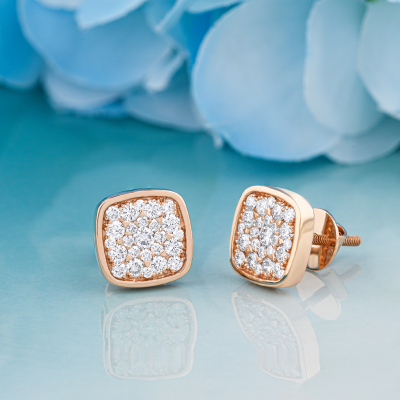Amethyst Crystal: Who can wear it And How To Choose The Best One?
The world of crystals and gems is extremely fascinating. Not only do these crystals make an exquisite statement piece of jewelry. Nevertheless, it is amazing to think that something so small can have excellent powers to handle and even strengthen and afflict planets. Amethyst crystal is one of the most popular and beautiful quartz pieces that is well known for its healing power. It is also called Jamunia or Katela due to its transparent violet color. This purple-hued crystal is widely used in different types of jewelry and is often used in alternative healing therapies. Moreover, it has magnificent properties to stimulate emotions and nurture the body to stabilize the health chakra.
It is believed that Amethyst has medicinal and therapeutic advantages. Astrologers also believe that this precious stone offers protection against all kinds of evil energy. As per modern astrology, it is a birthstone of February, considered a birthstone for Pisces and a popular choice for the 6th wedding anniversary.
This blog will guide you on who can wear Amethyst, its quality factors, and much more.
Who can Wear Amethyst Crystal?
There is no such thing as who can precisely wear Amethyst. Everyone can wear this crystal and also take benefit from wearing it. It is believed that Amethyst provides peace and prosperity from outside chaos around the world.
This semi-precious gemstone, popularly known by various names, is linked with horoscopes and Vedic astrology. In different cultures and astrology, Amethyst is linked with different horoscopes. However, it is believed that anyone who desires and wishes for wealth, fame, honor, and good health should wear this crystal.
Amethyst crystal is very beneficial for the people belonging to zodiacs namely Aries, Cancer, Leo, and Scorpio. By adorning Jamunia, one can effectively surround themselves with positive vibes and get rid of Saturn’s flaws and other negative energy.
Is Amethyst A Crystal Or Gemstone?
Amethyst is a quartz crystal, that obtains its purple color from elements present as it grows. One might call an excellent attractive amethyst crystal a potential gemstone. In terms of trading, it might be referred to as a rough gemstone in its natural state. If the crystal is cut and polished, sold, or set for wearing, it can become a gemstone. In a commercial setting, Amethyst is generally known as a semi-precious gemstone, often used in jewelry.
Whether a crystal/stone/gemstone is considered rare, precious, or extremely durable, it can still be breathtakingly adorable and beautiful! The beauty and value of stones are very much in the eye of the beholder once they’re released from the commercial chokehold.
What Should You Look For When Choosing Amethyst Crystal of High Quality?
There was a time when this most-prized quartz was only available to royal families but plenty of supplies now have made Amethyst more widely available in modern times. The price of this gemstone is evaluated based on various factors, and one must acknowledge the element that determines quality and price.
-
Color
The color factor of the gemstone notably determines its quality. One of the finest amethyst colors is that of a strong reddish purple or purple with no visible color zoning. Dealers highly recommend solid reddish purple to dark purple, providing the stone is not too dark to reduce brightness. Because if the stone is too dark, it might look black under dim light backgrounds.
Any color tints such as brownish, bronze colored, or any noticeable color zoning in an amethyst crystal can lower its price value dramatically. Buyers of loose Amethyst observe color zoning by placing the crystal table down against a white background.
-
Clarity
The vast majority of faceted Amethyst on the market is eye-clean, which means there are no inclusions visible to the naked eye. Eye-clean material with a highly saturated color is considered more valuable. Rarely does an amethyst undergoes fracture-filing treatment of its surface fractures to improve clarity. If an amethyst crystal surpasses the clarity standards, it is recommended to purchase it.
-
Cut
Amethyst is popularly known for cutting into myriad freeform shapes, done mainly by hands or automated cutting. Nevertheless, it is cut into various standard shapes and styles, including rounds, ovals, pears, emerald cuts, marquise, cushions, and much more. The brilliant cuts include classic triangular, kite-shaped facet arrangements, an arrangement of parallel concentric facets called a step cut, and a mixed cut that combines both arrangements.
Amethyst sometimes displays concave faceting, whereas flat facets typically have concave shapes. Moreover, there are a lot of other cuts and carvings including the carving of objects or animals.
-
Carat Weight
If you are thinking about How to Wear Amethyst Necklace or what size range to look for? Amethyst is available in all sizes for setting it into a wide collection of jewelry styles. Since the price per carat does not increase dramatically with increased size, it is popular as a large center stone.
Amethyst is also commonly found in calibrated cuts meaning they are cut precisely based on industry size standards in all qualities.
This blog post will help you answer some of the questions regarding an amethyst crystal, such as who can wear Amethyst, whether it is a gemstone or a crystal, and the most essential factors in choosing the best quality amethyst when you are shopping for one.
Read more about Real vs Fake Amethyst: 5 Tips To Identify The Difference










